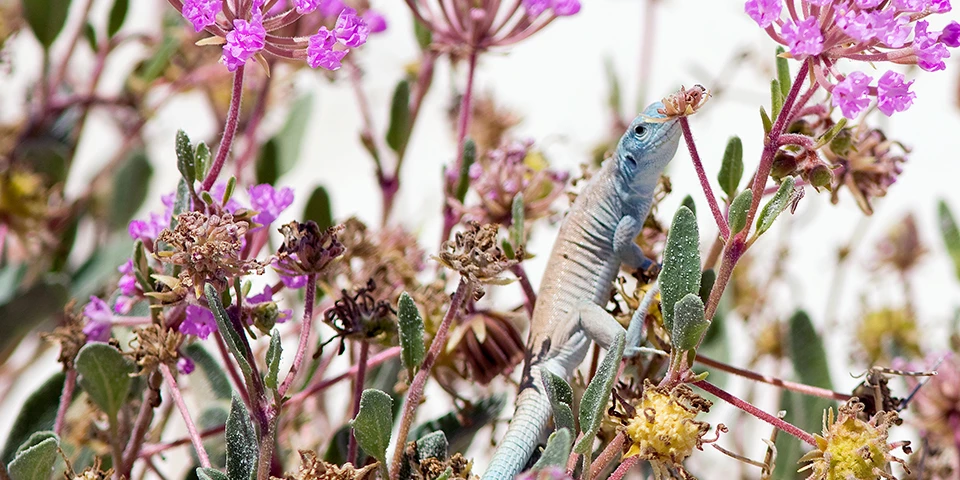
NPS Photo
Found only at White Sands National Monument, the little white whiptail was once considered a subspecies of the striped whiptail. Today, based on scientific analysis (DNA, morphology and allozymes), it is officially named Aspidoscelis gypsi. With a long neck and body, powerful legs and a scaled pointed head, this pale blue lizard, whose underside is white, is found only in a small portion of the White Sands dunefield. The little white whiptail survives in a desert environment of little drinkable water, temperature extremes, and limited nourishment. While no specific population data exists, estimates suggest that its numbers may reach 10,000 or more. Unlike its whiptail relatives, it is an active hunter roving over the dunes and searching under sumac branches, rosemary mint bushes, and rabbit brush for spiders, larvae of moths, butterflies, and beetles. Using its forked tongue to smell, it seeks out prey to eat. The little white whiptail must use its coloration and speed to avoid being prey to birds (roadrunners, hawks), larger lizards, and snakes. Furthermore, its breakaway tail gives the little white whiptail a second chance to escape to brush or to its burrow. With the change of weather in the fall, the little white whiptail limits its activity on the dunes. Typically, it will return to the dunes in March or April when the outside warmth can keep its body at an acceptable temperature. Due to a lack of research, little is known about the reproductive behavior of the little white whiptail. Within the whiptail classification, certain species contain only females. Reproduction is by a process known as parthenogenesis, which results in genetic equivalents of the mother. In other words, the baby lizards are identical to their only parent. Other whiptail species require both male and female lizards to reproduce. After copulation in late spring or early summer, one to six eggs are laid. These emerge some 60 to 75 days later. |
Last updated: February 24, 2017
